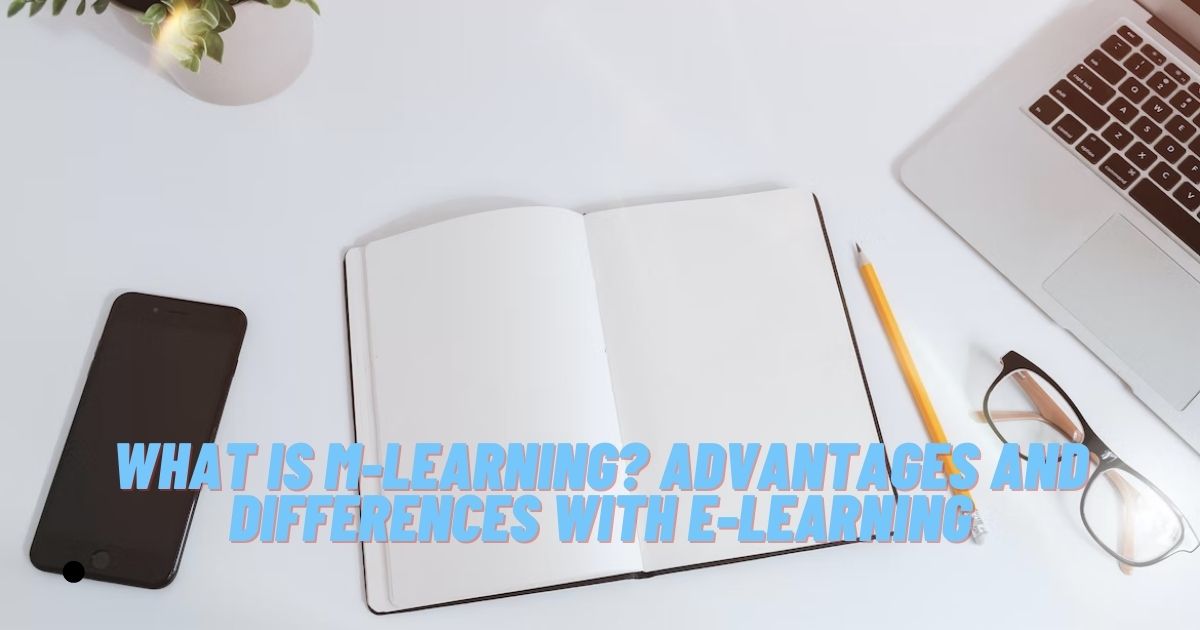The cell phone is an essential accessory in our lives, we always carry it with us and use it for everything. Why not use it for learning? That’s how m-learning was born, designed to improve learning with cell phones.
Want to know what M-learning is and what its benefits are? Stay and read this post, below we’ll tell you everything you need to know!
What Is M-Learning?
M-learning or mobile learning is a type of learning that uses mobile devices with wireless connectivity to teach, and an adaptation of this methodology in its use. The main characteristics of this learning methodology are connectedness, personalization, versatility, flexibility, and accessibility every day and every hour of the year.
But its main feature and the reason it is becoming mainstream for new generations is motivation, as students are familiar with the technology and perceive the learning process as something playful. This is not surprising, because students know how to quickly follow the link https://writememyessay.com/custom-essay/ and order homework right from their phone.
Mobile learning is an adaptation of technology to teach that we must consider in the near future. Nearly 70% of the world’s population has a cell phone, and the average age at which users start using a smartphone is decreasing. For this reason, the education sector has been paying attention to this development and adapting to the environment for several years.
Differences With E-Learning
Although the concept of E-learning is much more familiar to society, M-learning is derived from E-learning. In E-learning, learning takes place over the Internet, while M-learning is based on learning through mobile devices. The main difference between the two types of learning is how the learning will take place.
In addition to this basic distinction, we can find several other variations, knowing that in E-learning: learning is accessed through some sort of E-learning platform, it supports longer sessions, alternatives to physical classrooms, or the size of the screens on which it takes place are larger and offer more complex content.
Whereas with M-learning: sessions are shorter, learning takes place on a mobile device, consumes memory and battery power, and offers a more spontaneous experience because it is not designed for continuous learning. Mobile learning is support for E-learning.
Main Benefits of Using M-Learning
Like all methods of learning and teaching, it has its advantages and disadvantages in use. As for the advantages of M-learning in education:
- Easy access and flexibility. The student has the ability to connect and learn anytime, anywhere. They only need a cell phone with an Internet connection.
- Collaborative learning. Communication between teacher and student is instantaneous and the interaction is flatter. The student maintains constant contact with the teacher, who can resolve doubts much faster. In addition, there is operational monitoring of activities, allowing you to be aware of everything that is happening.
- Expansion of digital competencies. The student will become familiar with information sources, applications, and search engines to learn how to find the most convenient data they need.
- Motivation and gamification. Learning can be fun, implementing games or apps with interesting content for students will motivate and promote learning.
- Illuminating experiences. The content presented in M-learning is consumed in small portions, not requiring long sessions glued to the screen. This provides greater comfort for all participants and better results.
Disadvantages of Using M-Learning
As for the disadvantages of M-learning, there are a few:
- Distraction. Cell phone use can lead to a lot of distractions. Responsible use of the device should be encouraged.
- Device limitations. Using e-learning can lead to excessive use of cell phone memory, as well as viruses or connectivity problems. Also of note is the size of the screen, which can be frustrating and make it difficult to read.
- Lack of adaptation. The content used should be adapted to both the devices and the instrument as a whole. There may be students who are unfamiliar with new technology, and this can slow down the learning process.
Tips for Implementing M-Learning in the Classroom
As you can see, mobile devices can do a lot for your students. Why don’t you start using M-learning as soon as possible?
To implement mobile learning, you need to consider your students, their preferences, and their learning goals. Therefore, you should carefully analyze these parameters when planning:
- The learning goal to be achieved. Analyze whether M-learning is compatible with the goal you set for your course. It should provide benefits at all times.
- Learners. Find out who they are and talk to them. Find out their average age, their skill with technology, and the time they spend on cell phones…
- Type of device and connectivity. Do they have the right mobile technology to access your content? Make sure your material is appropriate for their devices and that they will have a Wi-Fi connection.
- Options for adapting and targeting instructional material. Reduce content to small tablets or learning blocks that can be absorbed in a short amount of time. Prepare material that captures their interest and that your students won’t leave for other distractions.
- How to measure success. It’s important that you track the experience. Use tools to confirm that you are meeting your goal (satisfaction surveys, assessment tools, etc.).
Conclusion
As we have seen throughout this article, the use of mobile technology in the learning process is necessary for students to gain new skills and a deeper understanding of the content being taught in class.
What do you think of our post about mobile learning, do you know of other reasons that justify its relevance? Let us know in the comments, we look forward to hearing from you!

